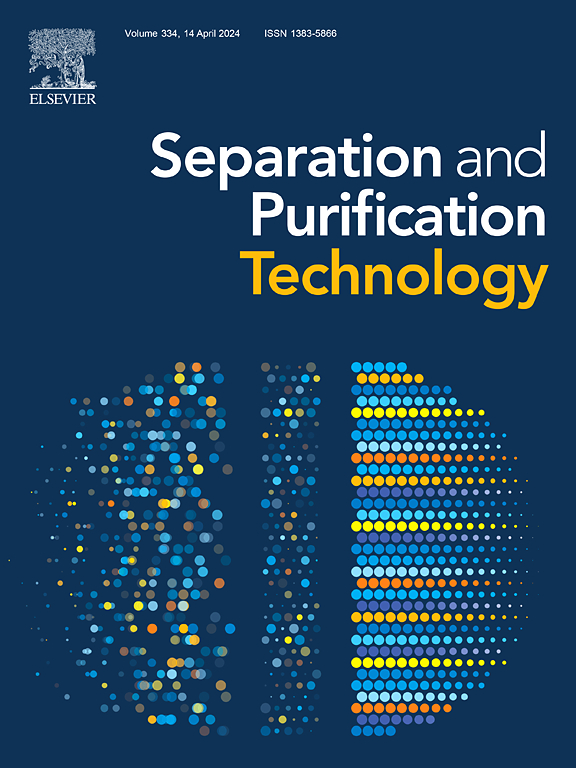Acid-Resistant triazine-amine-based Polyamide-Sulfonamide nanofiltration membranes for efficient acidic wastewater treatment
IF 8.1
1区 工程技术
Q1 ENGINEERING, CHEMICAL
引用次数: 0
Abstract
The discharge of acidic wastewater poses a significant environmental challenge to sustainable industrial development, underscoring the urgent need for advanced technologies capable of efficient water and acid resource recovery. Nanofiltration (NF) as a promising approach, yet the high-performance acid-resistant membrane is still in great demand. Herein, an acid-resistant NF membrane is designed and prepared by generating sulfonamide groups from the large-size triazine amine monomer and 1,3,6-naphthalene trisulfonyl trichloride (NTSC). Specifically, the acid-resistant nanofiltration membrane was fabricated via interfacial polymerization using the synthesized N2,N4,N6-tris(2-aminoethyl)-1,3,5-triazine-2,4,6-triamine (TET) with NTSC and 1,3,5-benzenetricarbonyl trichloride (TMC). Owing to the reduced density of amide bonds in the separation layer caused by the increased spatial dimensions of the TET monomer and the formation of sulfonamide structures, the resulting membrane demonstrated high stability under harsh acidic condition, maintaining 97.3 % of rejection for Na2SO4 along with 4.87 LMH·bar−1 of water permeability, even after prolonged exposure to 15 % H2SO4 for 80 days. This work introduces a novel strategy to enhance the membrane stability in acid environment, offering a promising candidate for practical applications in acidic wastewater treatment.


求助全文
约1分钟内获得全文
求助全文
来源期刊

Separation and Purification Technology
工程技术-工程:化工
CiteScore
14.00
自引率
12.80%
发文量
2347
审稿时长
43 days
期刊介绍:
Separation and Purification Technology is a premier journal committed to sharing innovative methods for separation and purification in chemical and environmental engineering, encompassing both homogeneous solutions and heterogeneous mixtures. Our scope includes the separation and/or purification of liquids, vapors, and gases, as well as carbon capture and separation techniques. However, it's important to note that methods solely intended for analytical purposes are not within the scope of the journal. Additionally, disciplines such as soil science, polymer science, and metallurgy fall outside the purview of Separation and Purification Technology. Join us in advancing the field of separation and purification methods for sustainable solutions in chemical and environmental engineering.
 求助内容:
求助内容: 应助结果提醒方式:
应助结果提醒方式:


